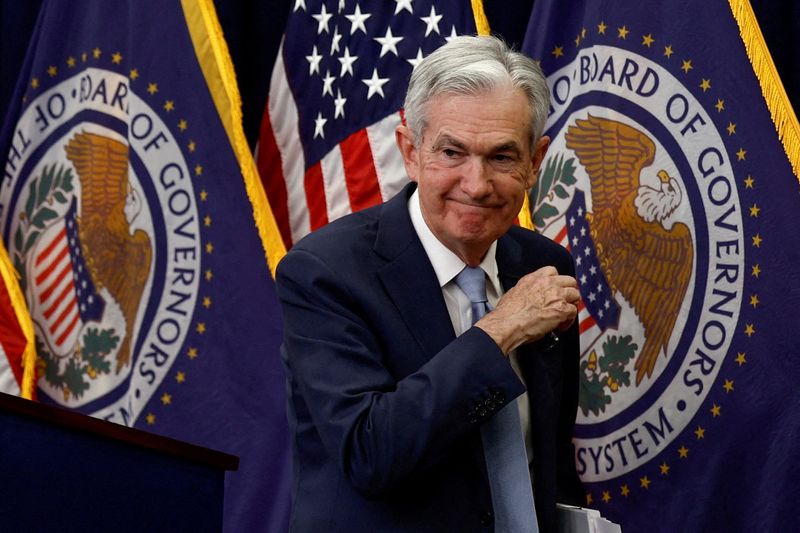Investing.com -- The Federal Reserve on Wednesday implemented its first interest rate cut since the early stages of the COVID-19 pandemic, reducing benchmark rates by half a percentage point in response to signs of a cooling labor market.
Amid weakening job growth and easing inflation, the Federal Open Market Committee (FOMC) opted for a 50 basis point cut to its key overnight lending rate, aligning with market expectations that had recently shifted toward a more aggressive reduction.
This marks the first half-point rate cut outside of emergency measures since 2008, during the global financial crisis.
The move brings the federal funds rate to a target range of 4.75%-5%. Though this rate primarily affects short-term lending between banks, it also impacts consumer products such as mortgages, auto loans, and credit card interest rates.
In addition to the rate cut, the FOMC’s “dot plot” signaled expectations for an additional 50 basis points of cuts before year-end, aligning closely with market forecasts.
Projections from individual Fed officials suggest a full percentage point reduction by the end of 2025, with another half-point cut in 2026. Overall, the dot plot indicates a potential total decrease of about 2 percentage points beyond Wednesday’s cut.
“The Committee has gained greater confidence that inflation is moving sustainably toward 2 percent, and judges that the risks to achieving its employment and inflation goals are roughly in balance,” the post-meeting statement said.
Following the announcement, the market faced higher volatility.
The S&P 500 fluctuated between small gains and losses before briefly rising by 1% after the decision. However, it pared those gains and ultimately closed lower. Both the Dow Jones Industrial Average and S&P 500 hit intraday highs before retreating.
What analysts expect after Fed’s first rate cut in years
Wells Fargo (NYSE:WFC): “It will be a close call whether we get another 50 bps move by year-end or if the Committee slows down to a more measured 25 bps pace. The employment reports that are slated for release in the next three months will be critical inputs into the FOMC's decisions at the November and December meetings. We will formally update our meeting-by-meeting fed funds forecast in the coming days, but we remain of the view that monetary policy will be back near neutral in one year's time. That is, we look for the federal funds rate to be roughly 3.00%-3.25% or so by this time next year.”
Citi: “A 50bp first rate cut completes the Fed’s hard pivot away from concerns over upside risk to inflation and toward downside risk to the labor market. We have consistently held the view that a softening labor market would lead to more aggressive rate cuts than markets had expected. The unemployment rate is likely to move higher and we maintain our call for 125bp of rate cuts this year with a subsequent 50bp cut in November and 25bp cut in December. Risks remain balanced to an even faster pace of cuts.”
ING: “Our forecasts are broadly in line with what the Fed is indicating – get rates down to 3.5% or a bit below by next summer on the basis that prompt action from the Fed allows the US economy to avoid recession just as it did in the mid-1990s under Alan Greenspan. That view still holds, but we certainly acknowledge that the jobs market outlook is more concerning and the risks are indeed skewed to the Fed having to do more, more quickly.”
RBC (TSX:RY) Capital Markets: “Our call is still that the Fed will pause in early 2025 as the current downside tail risks to labor fade, growth remains resilient, and some (very modest) upside risks to inflation potentially re-emerge. ‘95/’98/’19 still seem the most relevant roadmaps to us.”
“While we ascribe very little economic impact to the Fed’s decision to go 25 or 50 today, Powell proving that they will react strongly to labor concerns may help to deflate some of the large downside tail risks that have been driving the market’s bullish bias.”
Bank of America (NYSE:BAC): “Markets are pricing another 70bp-plus of cuts this year, and after today we are skeptical that the Fed will want to deliver a hawkish surprise. Therefore, we now expect another 75bp of cuts in 4Q, and 125bp of cuts in 2025, for a neutral rate of 2.75-3%.”
